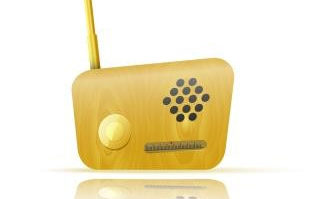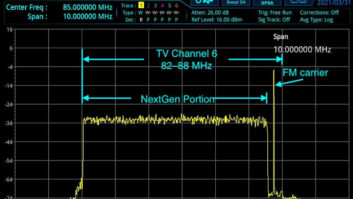Former VHF TV channels have no intrinsic value for �mobile� communications. The Wandering Engineer says we should let AM broadcasters have it, for cheap.
I am unaware of whether this is really true; for all I know it�s just a twisted fantasy, some sort of urban radio legend. But it goes something like this: A major owner of failing AM stations is making a bid in the spectrum auction for Channel 6.
Many batwings are still in place, just waiting to be re-energized.No one wants Channel 6, at least for wireless. As I understand it, that spectrum might be worth less than all of the property those AM stations use for their antennas arrays. The top end of Channel 6 has long been the land of the �Franken-FM,� being receivable on most Electronically Tuned Radios, and the analog variety, if one twists the knob hard enough counter-clockwise.�

The FCC is interested in selling spectrum, but before they can do so, they will have to move TV stations with appropriate incentives. No one knows what a good price for the about-to-be-available UHF spectrum really is; but every day that goes by, the carriers are building more and more tiny cells, slowly but surely reducing the demand for UHF wireless spectrum.
If the world becomes one giant set of high bandwidth micro-cells in the existing (already paid for) carrier-owned spectrum, the need for more bandwidth (at UHF in particular) is somewhat diminished.
It follows that as UHF spectrum loses value, low-band VHF drops as even more � perhaps drastically. No one has any Channel 6 receivers that work, except for DTV-TV and maybe a few analog TVs, mostly found at antique stores. Everyone has receivers that almost work on Channel 6. It�s not much of a jump to extend the FM band down, and that makes a lot more sense than the reasonably recent �extend the AM band up,� movement did. Adding more services to an exhausted medium works about as well as bloodletting did.
I think it might make sense to let all those AM guys, who think that if they could just get out of the big-land, high-noise, poor-fidelity end of the radio spectrum and into something that sounded good and covered the audience, do what the wireless guys do � offer to buy spectrum. Sure, it�s discount spectrum � but it doesn�t look like anyone wants to give it away, even for the public interest and convenience.
And please note: If these guys decide to go digital from the get-go, they can build a radio service that has several times the capacity of the existing FM band� and it would work better, too.
Listen to people who want to look at running three HDs in an FM-sized channel, and forget that analog hybrid; listen to the folks who want to fill in that little gap between Channels 5 and 6; or better yet, listen to those folks who want to run ATSC and HD Radio on Channel 6.�
It won�t be the first time a broadcast service moved to new spectrum. Home TVRO did it � C band to Ku. But this would probably be the first time a whole broadcast service just packed up and moved.
Sometimes, towns get tired of floods and just move to higher ground.
The Wandering Engineer is an industry stalwart who has been in broadcasting since the days of Marconi and Tesla. He gives his thoughts on the current state of broadcast engineering and the broadcast engineer.












